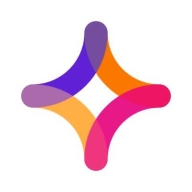

Jitterbit Harmony and AWS AppSync compete in the integration and application development sector. Jitterbit Harmony has the upper hand due to favorable pricing and robust integration capabilities, while AWS AppSync stands out for its advanced feature set.
Features: Jitterbit Harmony offers an intuitive drag-and-drop interface, seamless connectivity across various applications, and robust integration capabilities ideal for easy integration solutions. AWS AppSync provides strong real-time data processing, GraphQL API support, and advanced data interaction features, essential for applications requiring immediate data updates.
Ease of Deployment and Customer Service: Jitterbit Harmony is known for straightforward deployment, complemented by comprehensive customer service, facilitating streamlined integration projects. AWS AppSync leverages AWS infrastructure for profound deployment capabilities but relies on self-service resources, requiring more technical expertise.
Pricing and ROI: Jitterbit Harmony offers competitive pricing conducive to faster ROI for small to medium businesses, with a relatively cost-effective initial setup. AWS AppSync, targeting enterprises with scalable solutions, involves higher upfront costs, yet long-term resource optimization can lead to superior ROI for larger-scale implementations.
| Product | Market Share (%) |
|---|---|
| AWS AppSync | 0.8% |
| Jitterbit Harmony | 1.3% |
| Other | 97.9% |


| Company Size | Count |
|---|---|
| Small Business | 8 |
| Midsize Enterprise | 3 |
| Large Enterprise | 1 |
AWS AppSync simplifies application development by letting you create a flexible API to securely access, manipulate, and combine data from one or more data sources. AppSync is a managed service that uses GraphQL to make it easy for applications to get exactly the data they need.
With AppSync, you can build scalable applications, including those requiring real-time updates, on a range of data sources such as NoSQL data stores, relational databases, HTTP APIs, and your custom data sources with AWS Lambda. For mobile and web apps, AppSync additionally provides local data access when devices go offline, and data synchronization with customizable conflict resolution, when they are back online.
Jitterbit Harmony offers an advanced integration platform that simplifies data transformation, helps users quickly connect apps, and automates workflows, streamlining complex business processes efficiently.
Designed to meet the high demands of modern businesses, Jitterbit Harmony enables seamless integration across cloud and on-premise environments. By leveraging its powerful tools and user-friendly design, users can accelerate innovation, reduce operational costs, and enhance productivity. It bridges the gap between traditional and emerging technologies, ensuring organizations can adapt quickly to market changes and remain competitive.
What are the key features of Jitterbit Harmony?Jitterbit Harmony finds its application across numerous industries, from enhancing data integration in the healthcare sector to optimizing supply chain logistics in manufacturing. It supports financial institutions by improving transaction processing and facilitates real-time data connectivity in retail environments, making it a versatile choice for diverse industries looking to innovate rapidly.
We monitor all Cloud Data Integration reviews to prevent fraudulent reviews and keep review quality high. We do not post reviews by company employees or direct competitors. We validate each review for authenticity via cross-reference with LinkedIn, and personal follow-up with the reviewer when necessary.